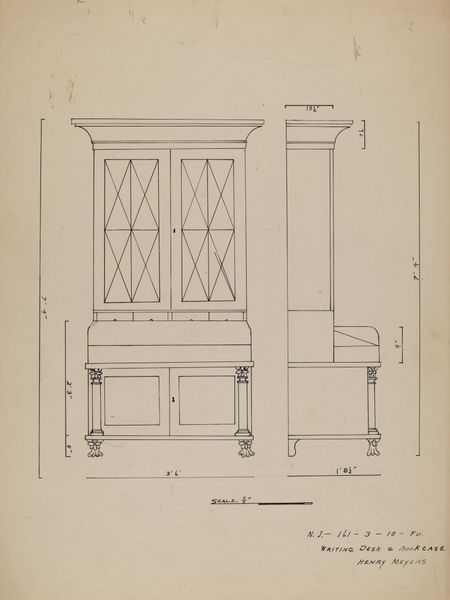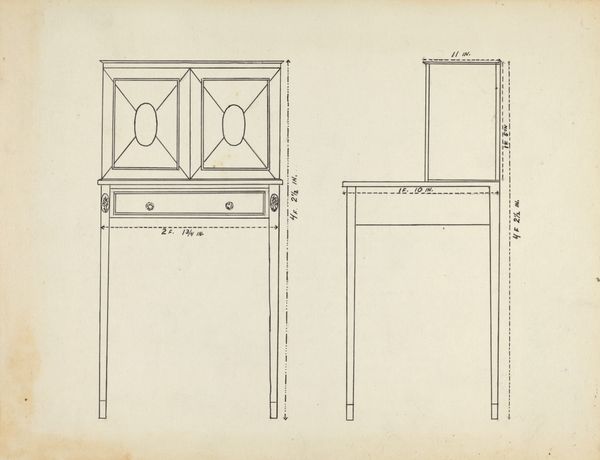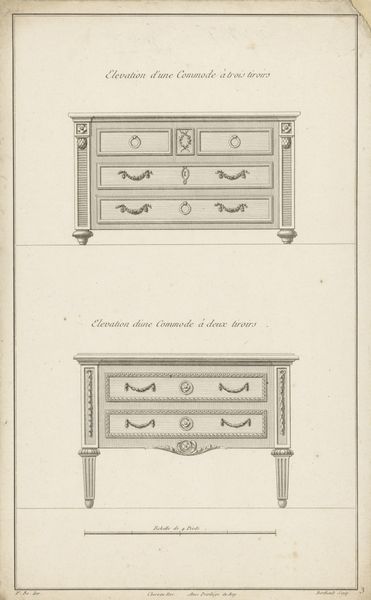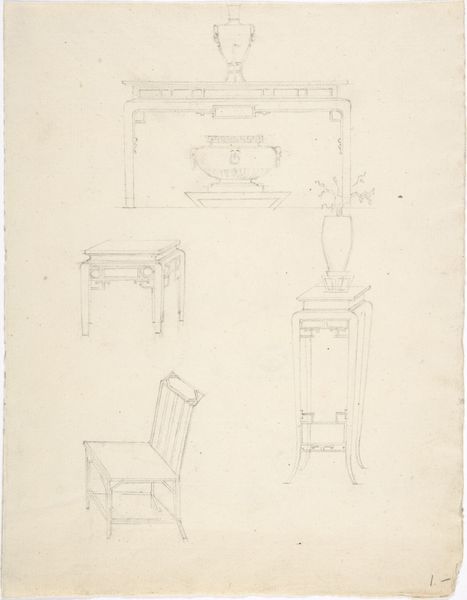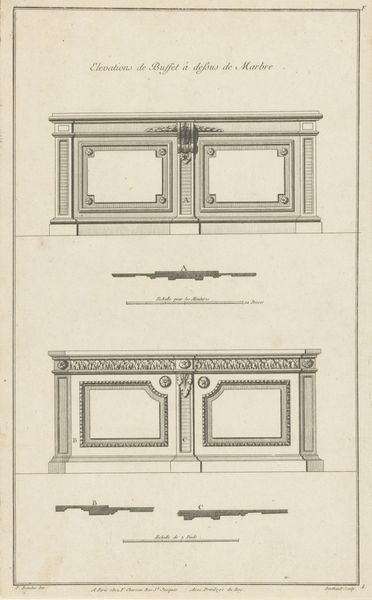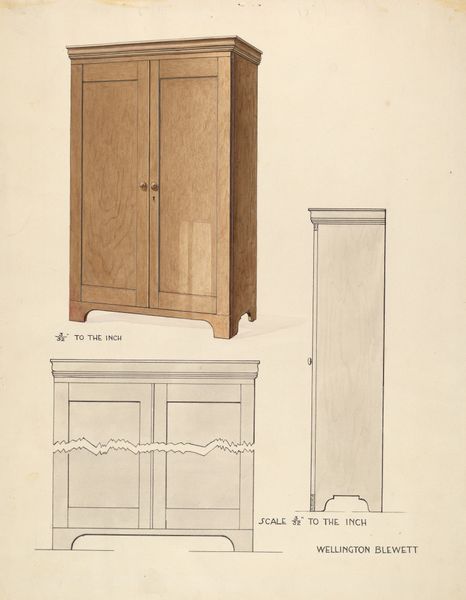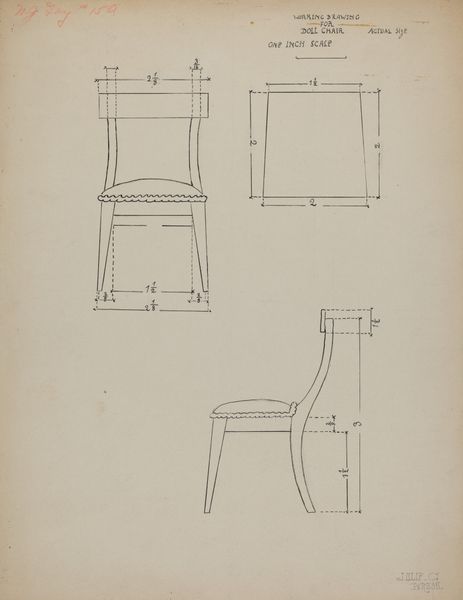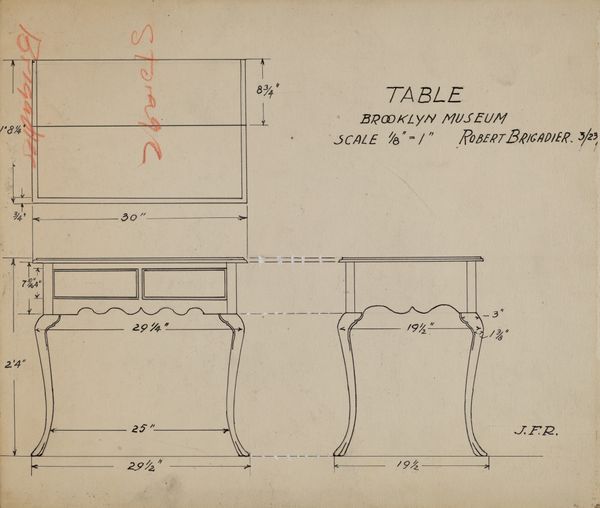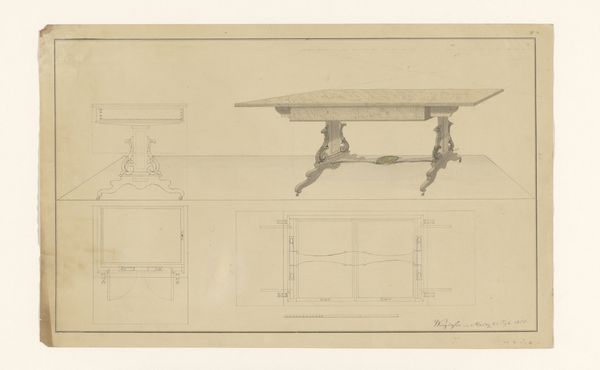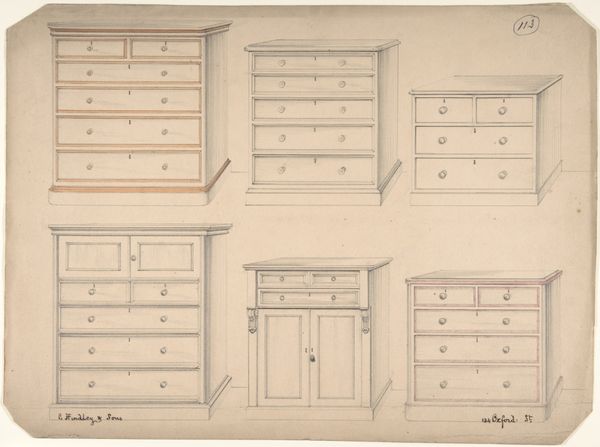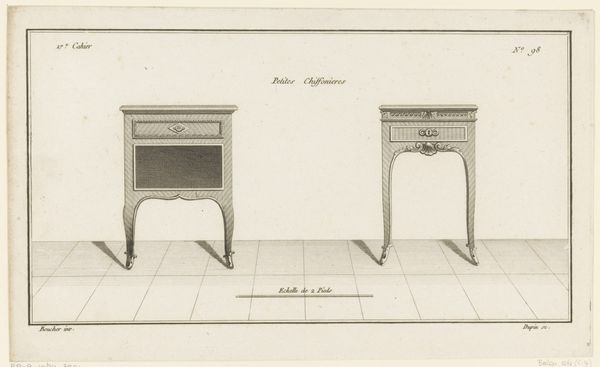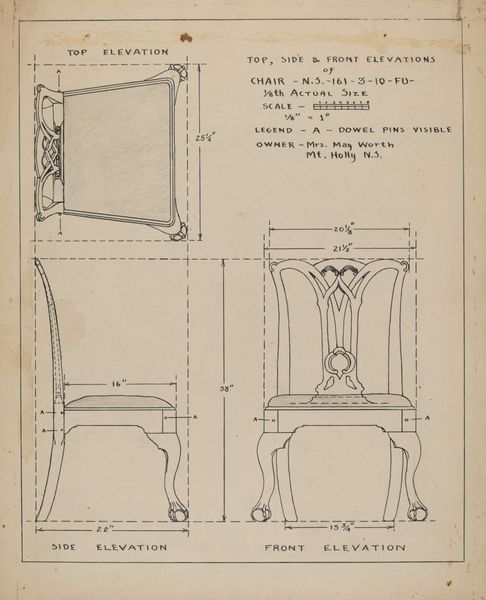
drawing, paper, architecture
#
drawing
#
paper
#
geometric
#
architectural drawing
#
line
#
architecture
Dimensions: overall: 21.5 x 26.4 cm (8 7/16 x 10 3/8 in.) Original IAD Object: 37"high; 30 1/2"long; 18 3/4" deep
Copyright: National Gallery of Art: CC0 1.0
Editor: Here we have Lorenz Rothkranz's "Box Desk on Frame" from around 1937, a drawing on paper of, well, a desk. What strikes me is how stripped-down it is; just the bare bones of design. What can you tell me about it? Curator: Stripped down is a good way to put it. We can consider this less as a pure art object, and more as a document of industrial and social intent. What kind of labor was envisioned to produce such a piece? Editor: That's interesting, I hadn't considered it in terms of labor. You mean, thinking about the skills required to make the actual desk based on this drawing? Curator: Exactly! The very *idea* of the desk—the design itself—demands a certain skill set, doesn't it? How does this relate to the prevailing workshop conditions of the late 30s? Also, look at the repetition of line here; the stark, geometric quality. Editor: It does look like a mass-producible item. It lacks the flair of hand-crafted furniture. Were they thinking about factory production when creating designs like this? Curator: Almost certainly. Think about the materials too - are we imagining hardwoods, expensive veneers? Or something more utilitarian, like plywood? The choice dramatically shifts its place within consumer culture and ideas about value. Editor: So, we're not just looking at a design, but an economic proposition almost? I guess art isn’t made in a vacuum, even simple sketches like this hold a lot more context. Curator: Precisely. Examining this "Box Desk" through the lens of its materials and potential production opens up a dialogue far beyond aesthetics. It makes us consider the social fabric that enables the creation of even the most basic commodities.
Comments
No comments
Be the first to comment and join the conversation on the ultimate creative platform.

